

William Stopford
The cars axed in 2025 that we'll miss the most
1 Day Ago
The Hyundai Santa Fe hybrid offers diesel fuel efficiency with petrol-electric refinement, and gives good competition to the Toyota Kluger.
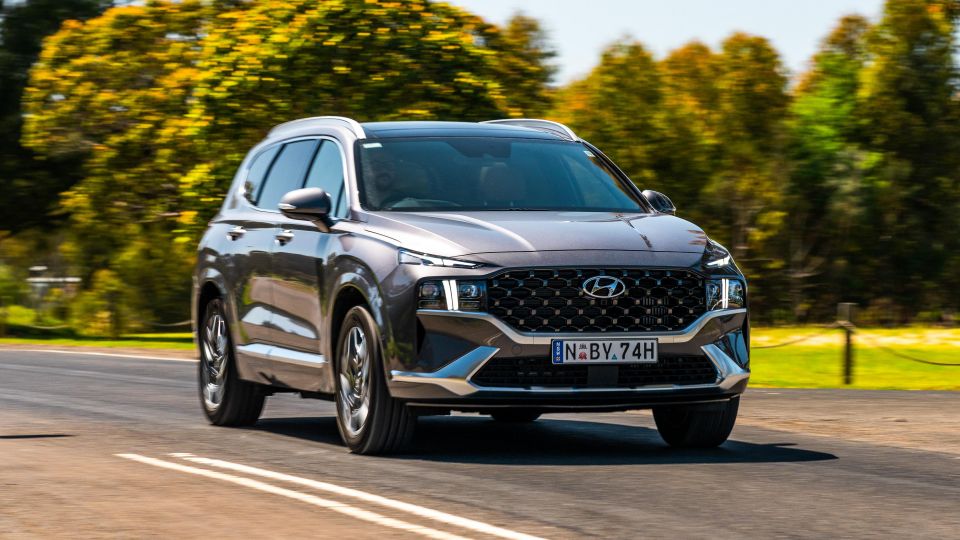
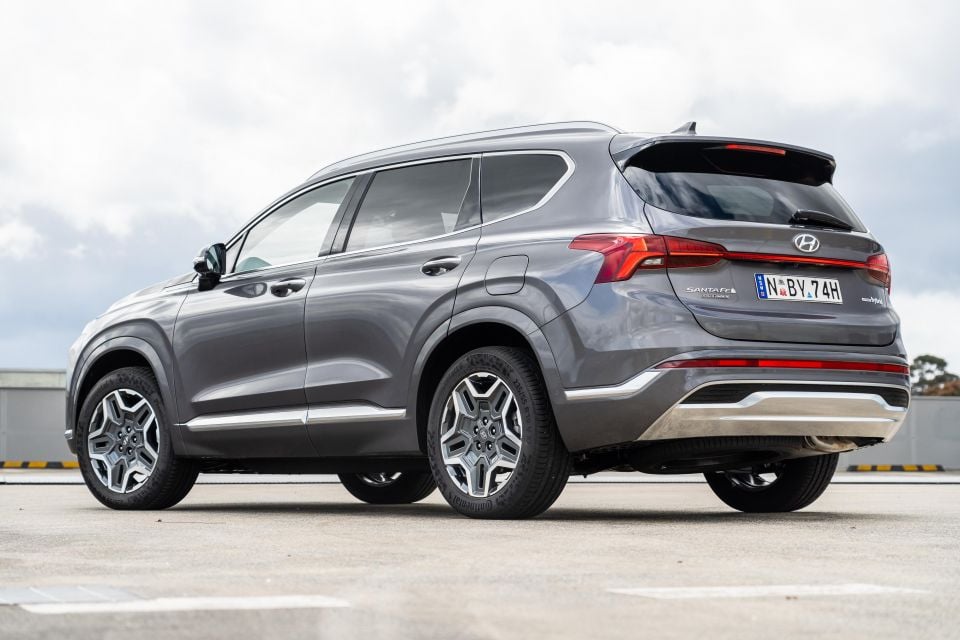

Quickly see how this car stacks up against its competition. Select any benchmark to see more details.
Where expert car reviews meet expert car buying – CarExpert gives you trusted advice, personalised service and real savings on your next new car.
SUVs designed for the school run and occasional road trip make ideal applications for hybrid drivetrains.
Take the long-awaited Hyundai Santa Fe Hybrid, which is vastly more more efficient than the existing petrol V6 but quieter and smoother than the more popular diesel.
Plus this established bridging technology is cheaper than full-electric drivetrains, meaning the Santa Fe remains notionally affordable for average families.

Moreover competition is quite limited. Toyota is the hybrid king with the Kluger, and there’s the Kia Sorento HEV too – if you can find one.
That said, the current (fourth-generation) Santa Fe model range dates back to 2018, so the hybrid arrives more than halfway through its life cycle. Does it still feel fresh?
Here we drive the top-of-the-range Highlander variant.
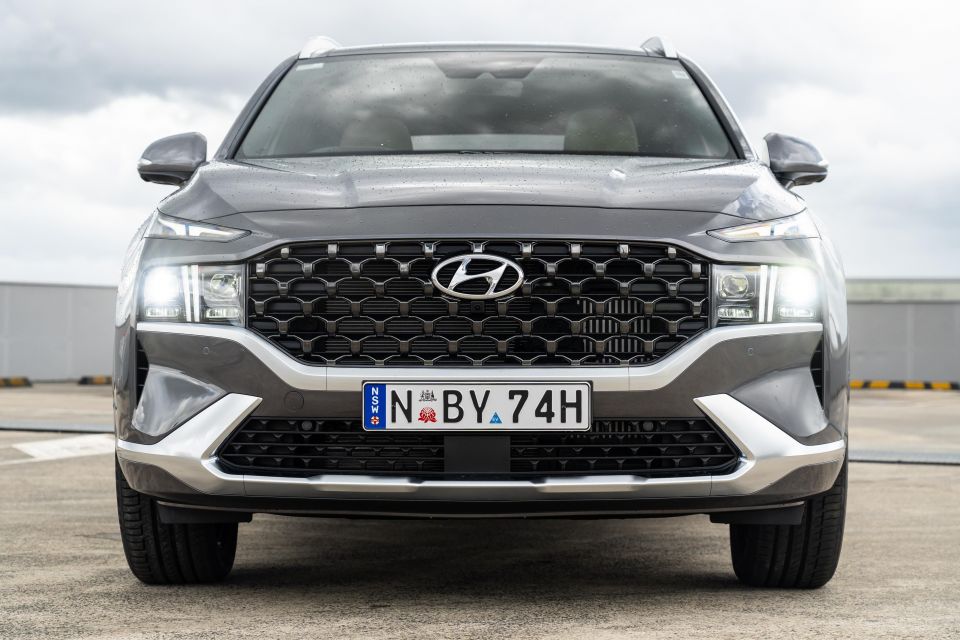
The two base Santa Fe variants are V6 petrol or four-cylinder diesel-only propositions, with the hybrid limited to better-equipped Santa Fe Elite and Highlander grades.
While this is disappointing, Hyundai counters that 74 per cent of Santa Fe buyers in general choose the two top specifications.
In both spec grades the hybrid (standard as all-wheel drive) commands a $3000 price premium over the diesel AWD, and a steep $6500 premium over the V6 petrol – which it must be said is front-wheel drive only.
2023 Hyundai Santa Fe prices
All prices exclude on-road costs.
At $69,550 before on-road costs, the Santa Fe Highlander Hybrid sits between the Toyota Kluger GXL and Grande eFour hybrid models.
It’s $200 cheaper than a Kia Sorento HEV GT-Line AWD, so much of a muchness when it comes to its relative.
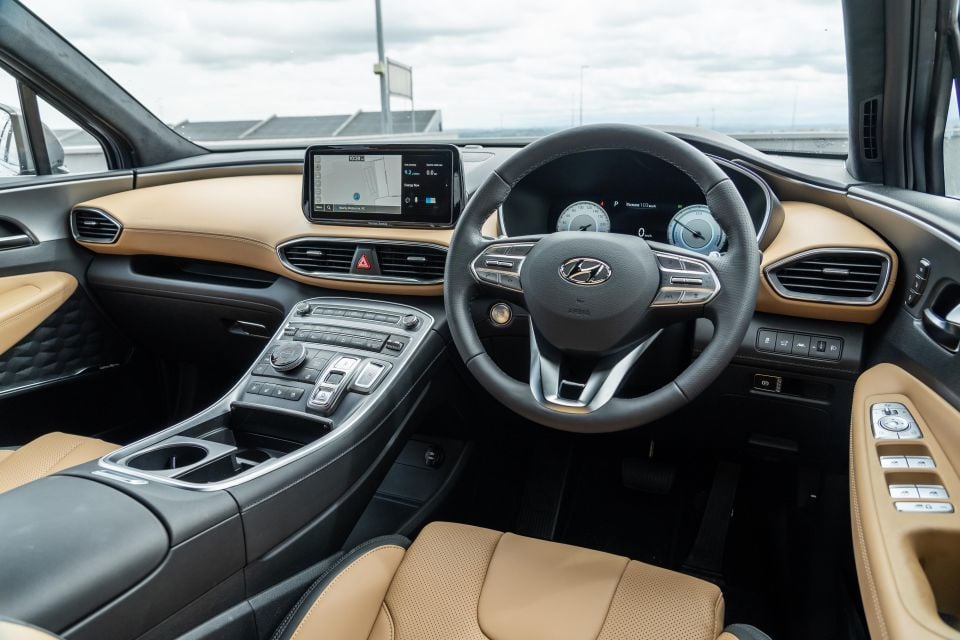
Buy your new car without the stress. It's fast, simple and completely free.

Great service from Travis and team, second time I have used this business would not hesitate to recommend them to anyone
Craig C.
Purchased a Ford Ranger in Sunshine Coast, QLD
CarExpert helped Craig save thousands on his Ford Ranger, now let us save you on your next new car.
Find a dealDon’t like the camel beige leather trim on the seats, dash and doors? All good, you can opt for black instead.
Most surfaces you see at eye level – unless you look downwards towards the floor – are padded and nicely stitched, which adds a bit of premium feel. I also like the way the curved door tops blends neatly into the curved dash-top, which I suspect was inspired by Jaguar’s design.
The driver’s seat is great, with plenty of bolstering, powered lumbar adjustment, plus both heating and cooling. There are also multiple memory presets if you share the car with another.
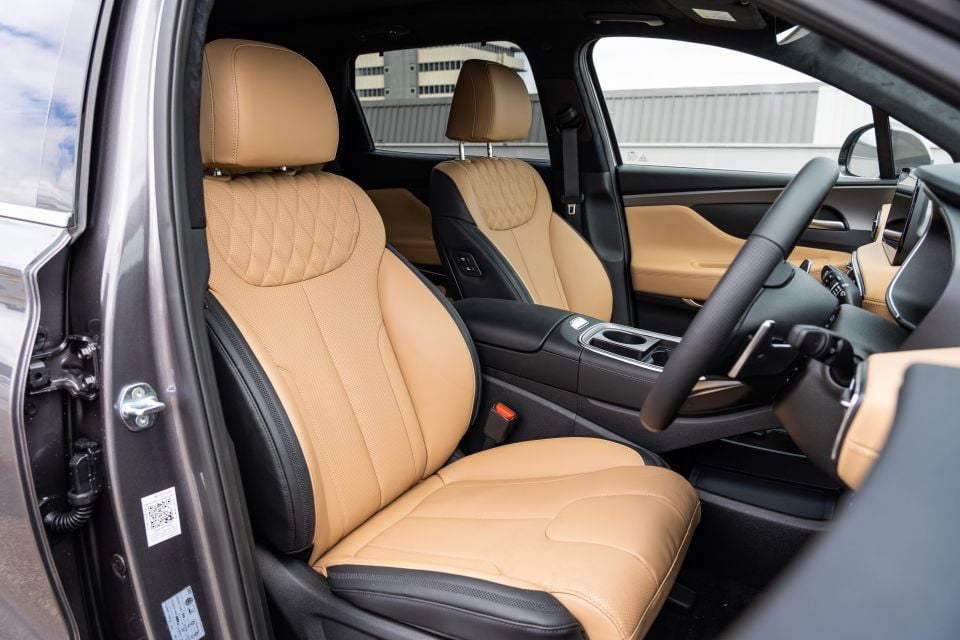

The leather-wrapped steering wheel is tastefully perforated on the hand grips and has easy to understand buttons on each spoke for audio, phone and driver-assist functions, and trip computer scrolling.
The digital cluster has a speedo on the left and power/charge meter on the right in lieu of a tachometer, and can be configured to show various functions – but not full-screen maps like you might find in, say, a Volkswagen product.
It’s supported by a head-up display on the windscreen so you can have a digital speed readout projected at eye level, for example.

The centre part of the dash comprises a 10.25-inch touchscreen mounted at eye level, with quick processing, good quality live mapping, wireless phone mirroring, and the ability to offer split-screen views – for example, maps on the right and a hybrid system live diagram on the left, or perhaps audio readout on the right and maps on the left.
There’s also a decent-resolution 360-degree camera view for parking, although it’s not the sharpest system in the class. It is, however, certainly better than the Kluger’s.
Apple CarPlay takes up the screen, however, and is what I personally prefer to use for simple intuitiveness. Moreover, the Santa Fe’s voice control only works if it can use Apple’s Siri or your Android’s equivalent, meaning there’s no actual embedded system for key functions.
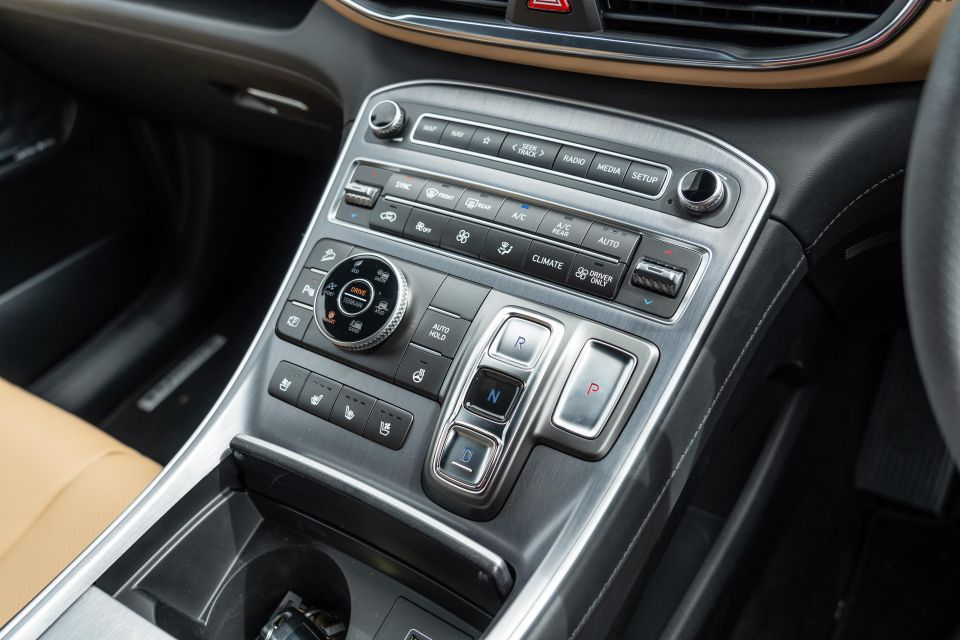
Buttons and dials are no longer fashionable according to most car brands, but Hyundai has – cleverly in my opinion – stuck with hard physical shortcut controls here. It may look cluttered, but it’s far easier to interface with on the move than it is to wade through menus.
You’ll find buttons, dials or rocker switches for functions such as your audio and ventilation controls, seat temperature adjustments, drive mode selection, and even the shift-by-wire transmission selector – in lieu of a traditional shifter.
These controls are surrounded by tasteful silvery trim, and there’s a refreshing lack of dust- and scratch-prone glossy black trim pieces in here. Going back in time in this case is very much a positive thing.

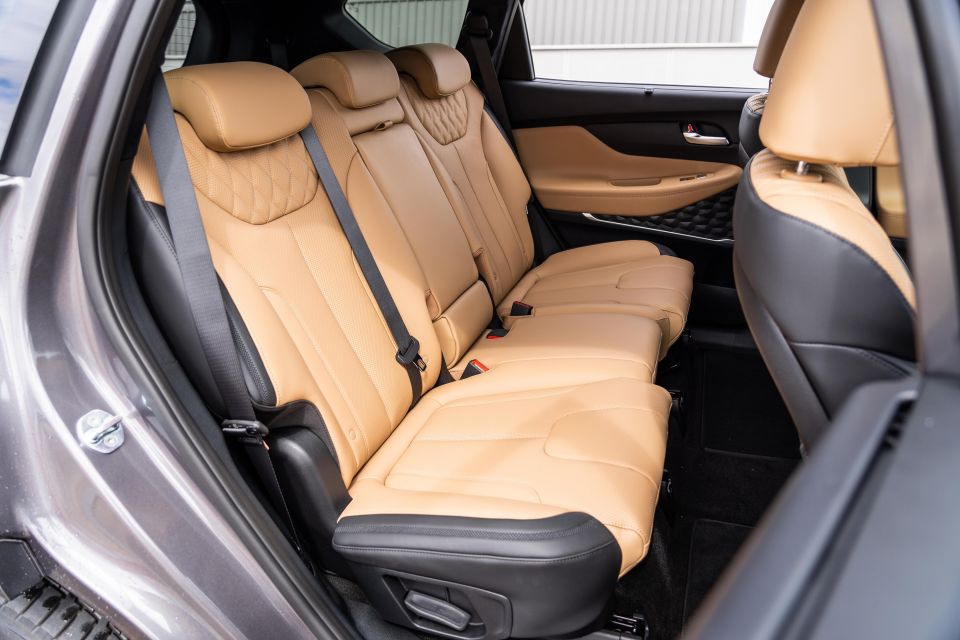
A few smaller touches worth noting include the tasteful ambient night lighting – ice blue being this writer’s pick – wavy speaker covers, deluxe suede headlining in the roof, backlit door handles for dark car parks, and a system that amplifies the driver’s voice to the rear seats.
There’s good storage, including a rubberised open section above the regular glovebox, a two-level console, bottle holders in the doors, and an open semi-hidden section below the central bank of buttons.
The middle seating row has acceptable legroom for my 194cm in the (heated) outboard seats, which also slide and recline, and offer amenities including vents, LED lights, USB-A ports, centre armrest, and sun blinds in the windows that neatly retract away.
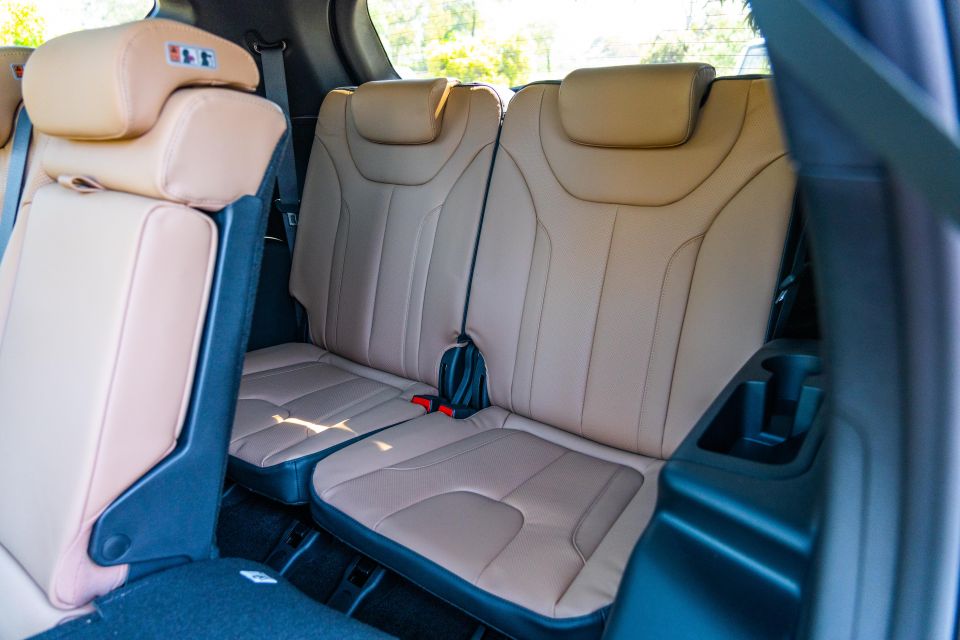
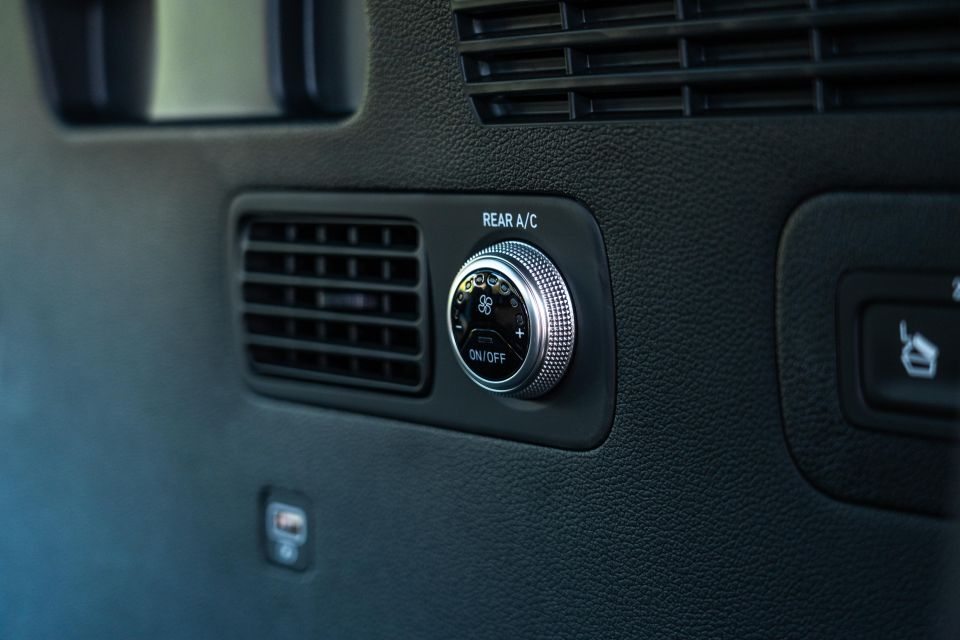
However, headroom is restricted by the vast sunroof, to the point where I had to tilt my head to fit. That said, more average-sized adults and certainly kids will be absolutely fine. The rear 60:40 split bench includes three top-tether points and two (outboard) ISOFIX anchors.
It’s a trifle odd to me that the larger portion of the 60:40 split bench is on the right-hand side, restricting kerbside access to the third row. We should note here that you can option the Highlander Hybrid as a six-seater, with two centre-row captain’s chairs instead.
The third row of seats (two occupants) remains a token effort really, suitable for kids or very tolerant adults, though they stow away flat into the floor when not in use so no harm. While rearmost occupants get ventilation and a USB, the side curtain airbags are explicitly listed as only covering the heads of rows one and two.
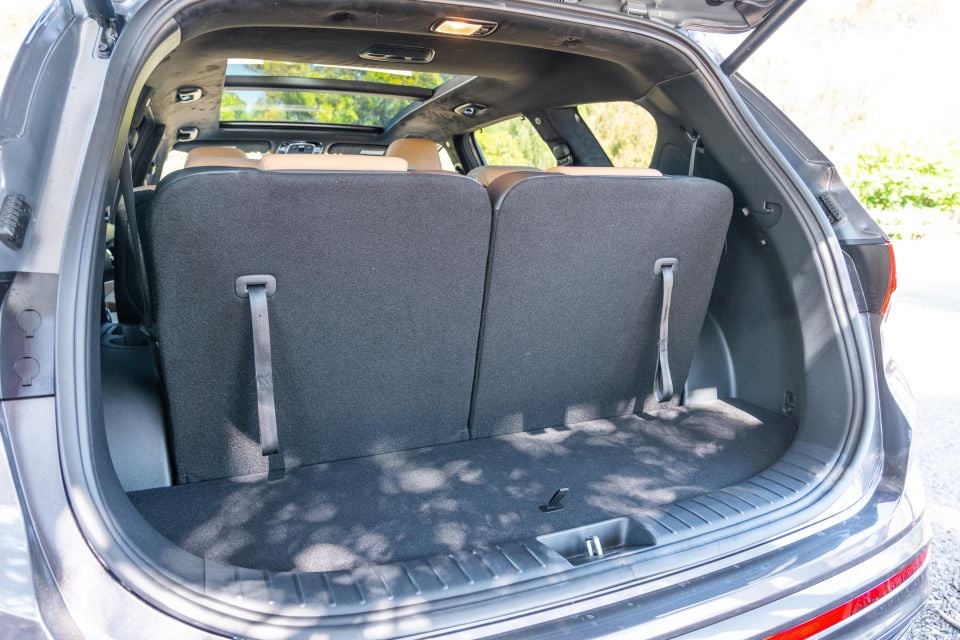
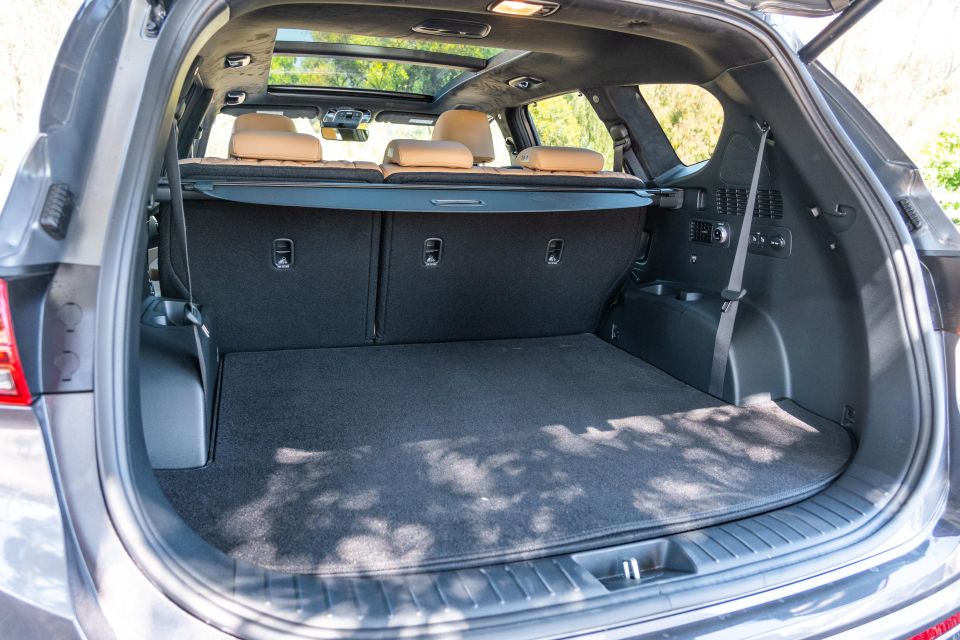
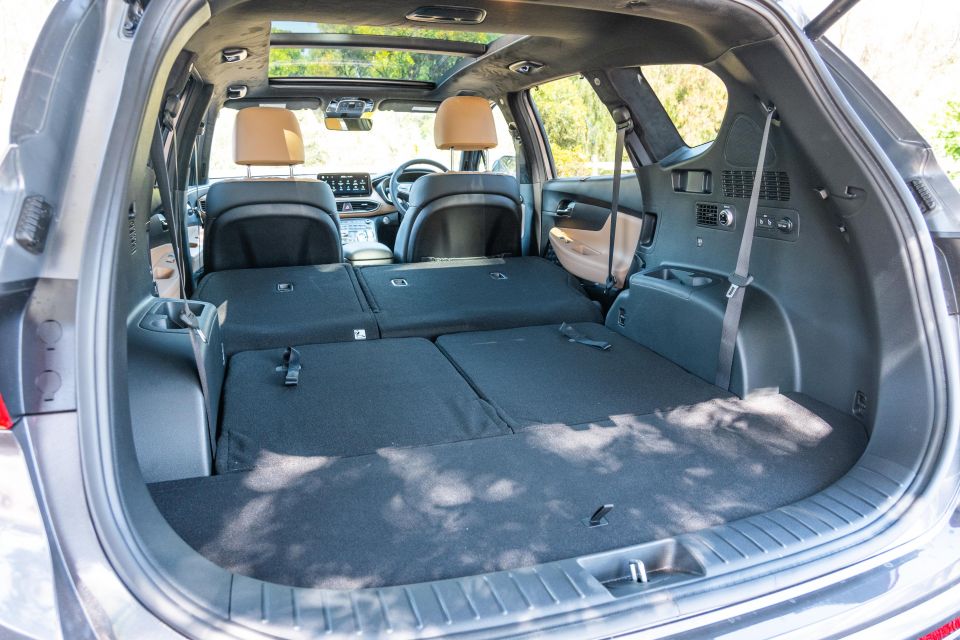
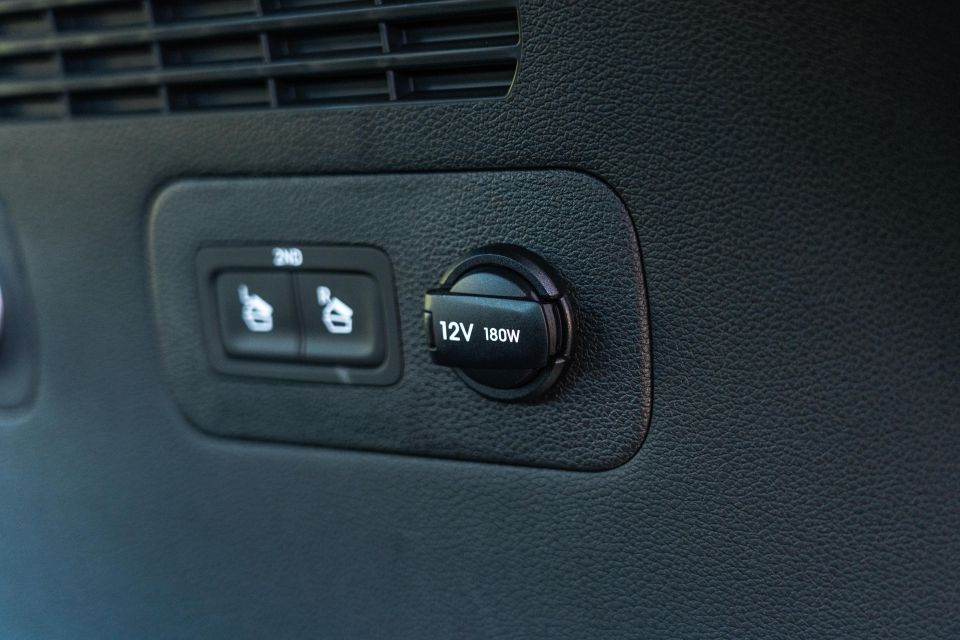
To be frank, if you want to carry six or seven people on a somewhat regular basis in a Hyundai vehicle, choose a Palisade SUV or a Staria people-mover instead of a Santa Fe.
Side note: Our test car had plastic trim pieces coming away from the suede headlining behind the third row seats in the D-pillar, which was the only real fit-and-finish issue we found.
Access to the boot is via a powered tailgate, and there are buttons near the wheel arch moulds that flip down the centre-row seatbacks to elongate the cargo space. There is a pull-out cargo blind, but there’s no underfloor storage for it in the hybrid due to the battery.
Hyundai says there’s no reduction in boot space when opting for the hybrid. With the third row in use there’s room for five average shopping bags or a compact pram, while with five seats in use there’s up to 782L of storage according to the spec sheet.
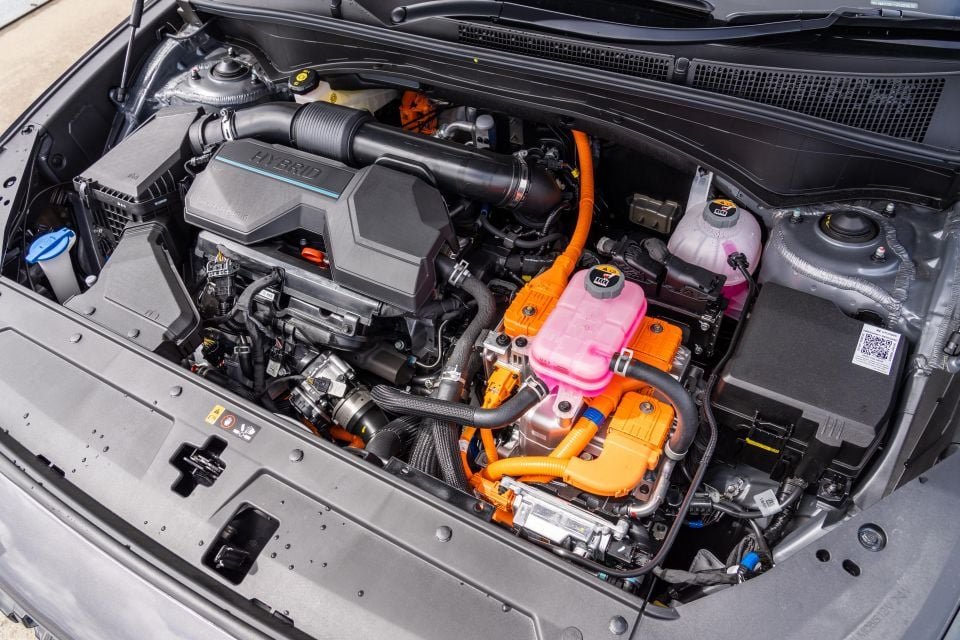
The drivetrain comprises a 1.6-litre turbocharged petrol engine and six-speed automatic, with an electric motor powered by a small lithium-ion battery kept charged by regenerative braking.
It comes standard with on-demand all-wheel drive – a system that uses an electronic, variable-torque-split clutch capable of active shuffling between front and rear axles.
Overall the drivetrain produces 169kW of power and 350Nm of torque, and claims fuel consumption of 6.0 litres of 91 RON per 100km on a mixed urban and highway cycle. Given the 67L tank, this means you should expect a driving range north of 1000km.
This is vastly superior to the 200kW and 331Nm 3.5-litre V6 option which uses a claimed 10.5L/100km, but only narrowly betters the 148kW and 440Nm diesel’s claim of 6.1L/100km.
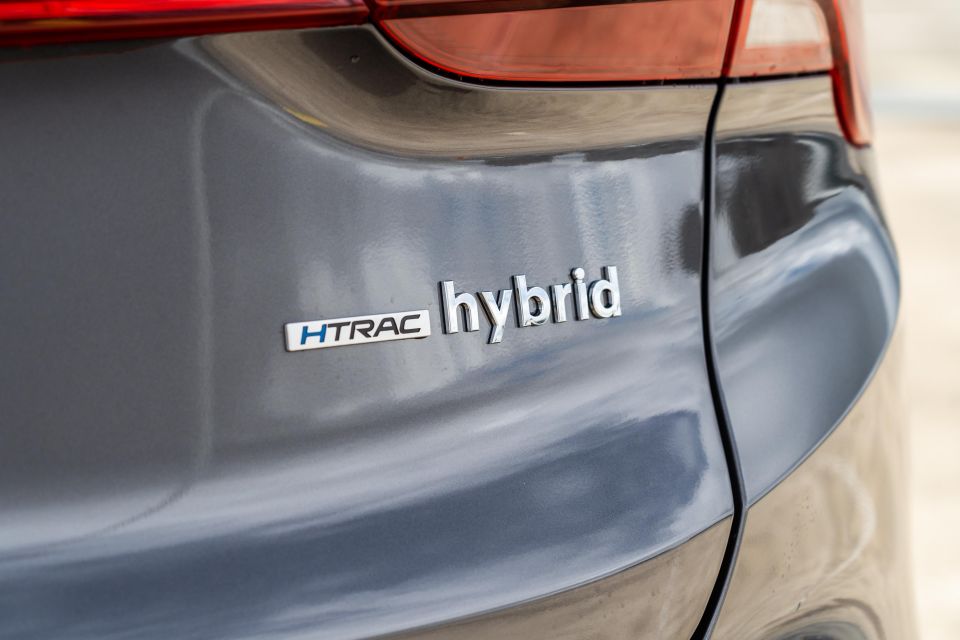
However, it’s important to take into account the hybrid’s bigger advantage in urban driving conditions with lots of stopping and starting – when the electric motor is most useful.
On the city driving cycle the hybrid uses 6.2L/100km versus 7.5L/100km for the diesel, and a whopping 14.7L/100km for the V6. Meaning, if you mostly drive around the ‘burbs, rather than long highway stints, the hybrid comes into its own.
In other words, if you do lots of miles on regional adventures or tow a trailer or caravan, the diesel remains the pick. But for the average buyer of a Santa Fe, with a heavy urban focus, the hybrid goes a long way to paying back its price premium.
One potential gripe is the towing capacity: the hybrid can lug 1650kg, whereas the V6 petrol and the diesel can handle 2500kg. At its heaviest, the Santa Fe Hybrid is 40kg heavier than the diesel equivalent, at 1983kg (kerb mass). It has a 100kg roof rack limit.
| Hybrid | Petrol | Diesel | |
|---|---|---|---|
| Engine | 1.6-litre turbo petrol (132kW, 265Nm) | 3.5-litre V6 naturally aspirated | 2.2-litre turbo four-cylinder |
| Motor | PMSM motor (44kW, 264Nm) | – | |
| Battery | Li-ion (1.49kWh storage, 270V) | – | |
| Max power | 169kW @ 5500rpm | 200kW @ 6400rpm | 148kW @ 3800rpm |
| Max torque | 350Nm @ 1000-4500rpm | 331Nm @ 5000rpm | 440Nm @ 1750-2750rpm |
| Fuel econ overall | 6.0L/100km | 10.5L/100km | 6.1L/100km |
| Fuel econ urban | 6.2L/100km | 14.7L/100km | 7.5L/100km |
| Fuel econ highway | 5.9L/100km | 8.1L/100km | 5.3L/100km |
| Fuel tank | 67L | 67L | 67L |
| Towing | 1650kg | 2500kg | 2500kg |
| Driven wheels | On-demand AWD | Front-wheel drive | On-demand AWD |
| Transmission | 6-speed auto | 8-speed auto | 8-speed DCT |

You generally hear nothing upon pushing the start button, since the electric motor tends handle things until you’re rolling above about 20km/h – unless you really mash the accelerator. You can crawl around car parks using only battery power for a little while too, ditto when reversing.
Urban refinement levels are a strong suit, meaning you don’t need to sit at the lights or the school pickup point with the petrol or diesel engine idling away at all times to run ancillaries. Moreover, the engine usually fires up once you’re moving, which smooths things out further.
There’s decent pickup off the line ably assisted by the motor’s instant torque, although the handover to the petrol and six-speed automatic transmission is not aways as seamless and smooth as a more honed Toyota hybrid system.
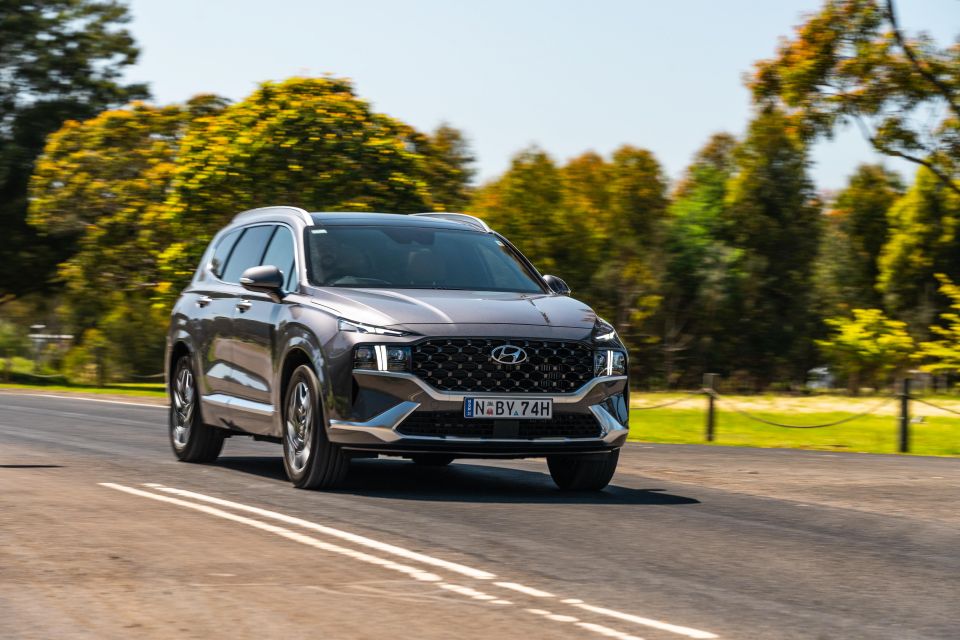
Where expert car reviews meet expert car buying – CarExpert gives you trusted advice, personalised service and real savings on your next new car.
At higher speeds, if you’re going downhill, the engine can decouple and the Santa Fe will run on battery power – kept charged by recapturing wasted brake energy rather than a wall plug – to further preserve fuel. I saw the Hyundai operate in EV mode at 80km/h at one point.
While not rapid, a circa 9.0-second zero to 100km/h acceleration time is entirely sufficient, and 0-60km/h it feels notably punchier.
In terms of fuel consumption, while the combined cycle claim is 6.0L/100km, my average on a fairly mixed 549km loop – driving the vehicle normally, neither too hard or too gently – was 7.2L/100km. If you’re careful and drive in traffic a lot, there are gains to be found.
There are several driving modes that sharpen or dull the throttle pedal take-up and add or subtract resistance from the steering, but I tended to leave the Santa Fe in so-called Smart mode whereby the car’s brain decides on the best mode for a given moment for you.
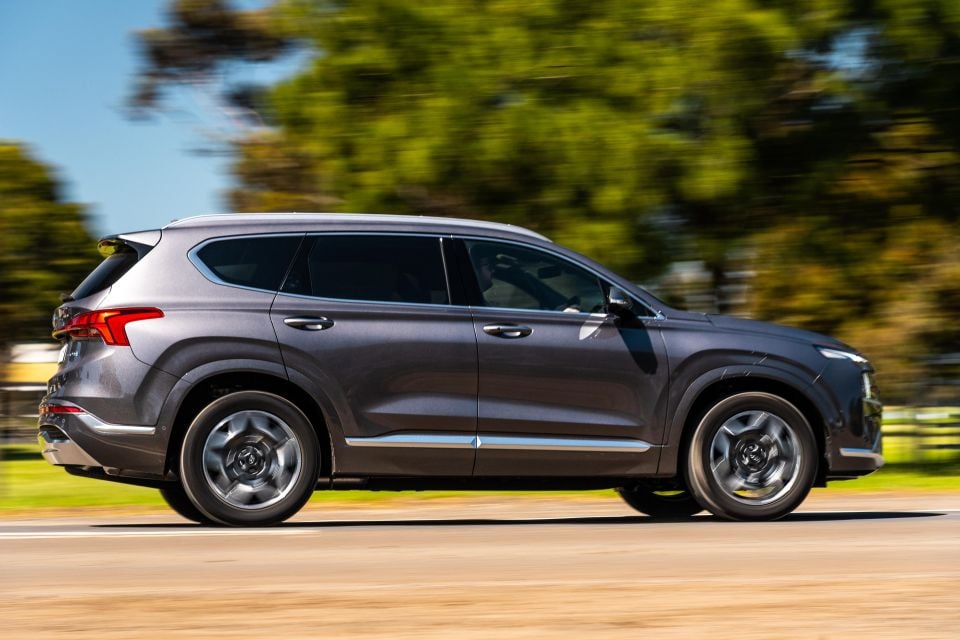
For the AWD system, while it generally favours the front wheels, it can shuffle torque to the rear and you can watch it doing so via a nifty animation in the instruments.
There are Snow, Mud and Sand modes that adjust various electronic controls to suit each terrain type, plus a hill-descent control function. The Hyundai is perfectly capable of handling a snow trip or slightly muddy footy oval carpark, but don’t plan that off-road adventure either…
While the Santa Fe’s design isn’t getting any younger, and there’s a replacement model already deep in testing ahead of a 2023 launch, the driver assist aids feel up-to-date – notably the lane-keeping assist system that uses steering intervention, and the ability to view your blind spots via camera displays in your cluster.
Dynamically, the 4.8-metre long Santa Fe is pretty good, with nice ride comfort that filters out bad roads – rolling on 10mm bigger tyre sidewalls over the petrol or diesel models helps no doubt – and decent body control in corners.
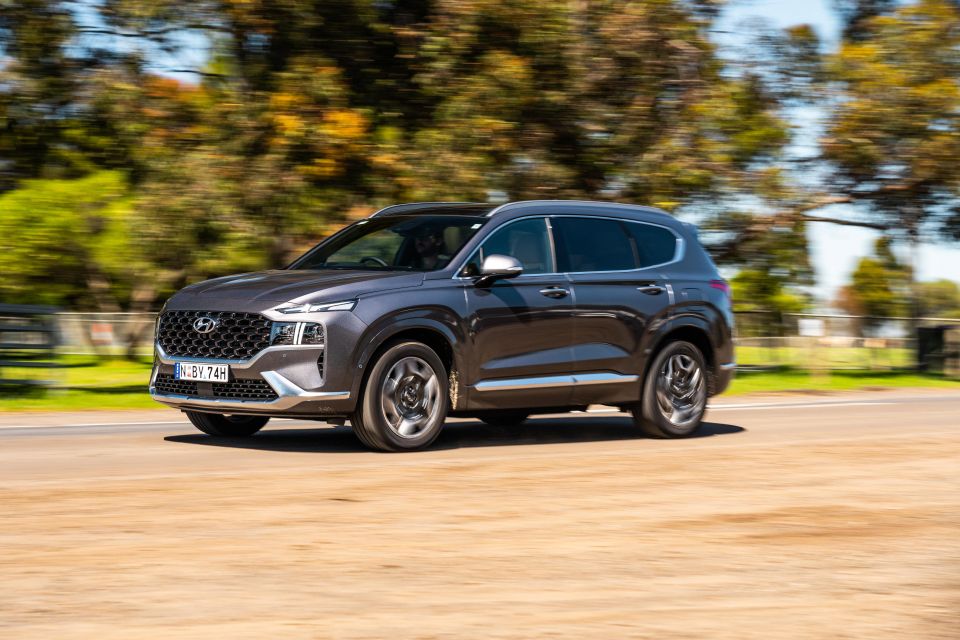
Hyundai says its Santa Fe Hybrid features a unique suspension tune developed in Namyang “and proven locally across the full spectrum of challenging Australian city, highway, country and gravel roads” in local tests.
“This is our first-ever turbo-petrol Santa Fe and of course our first hybrid SUV, so it’s quite an exciting proposition for us,” Hyundai Motor Company Australia product development manager Tim Rodgers said.
“The petrol/electric powertrain obviously changes the mass at the front, and with the battery in the rear, and all-wheel drive, Santa Fe Hybrid has a unique weight distribution, which in turn called for a specific chassis tune.
“This gave Namyang R&D the opportunity to focus on developing an especially refined ride and handling package that complements the quiet and polished hybrid powertrain.

“Our local validation and sign-off of Santa Fe Hybrid’s suspension tune confirmed to us that the team at Namyang nailed that objective.”
Yes, Hyundai would say that, but I don’t disagree.
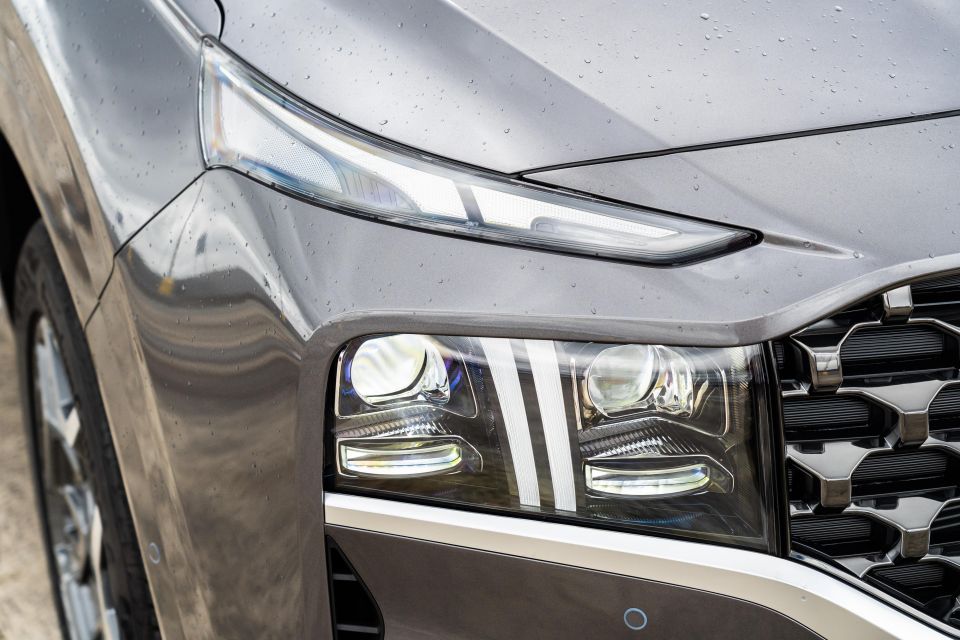
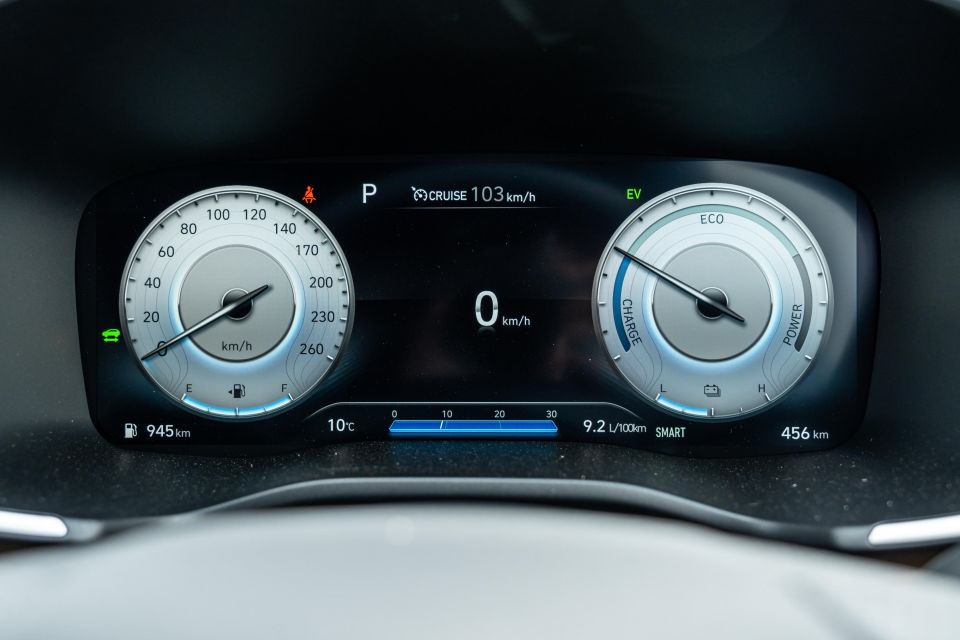


Our as-tested Hyundai Santa Fe Highlander comes with all the equipment on offer in the Santa Fe range, and has historically been the top-selling version.
Family buyers are willing to pay for all the luxury mod-cons, it seems.
Outside
Inside


Multimedia
Colours

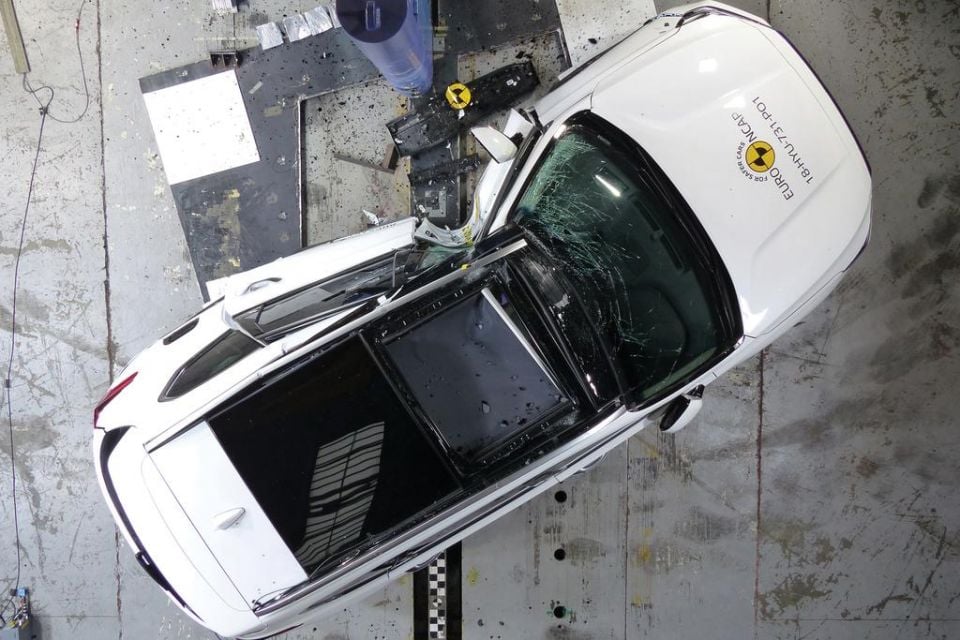
Petrol and diesel versions of the Santa Fe carry five-star ANCAP safety ratings from 2018, but the hybrid is not rated because it was not on sale when the vehicle was tested. Nevertheless it lacks no safety features.
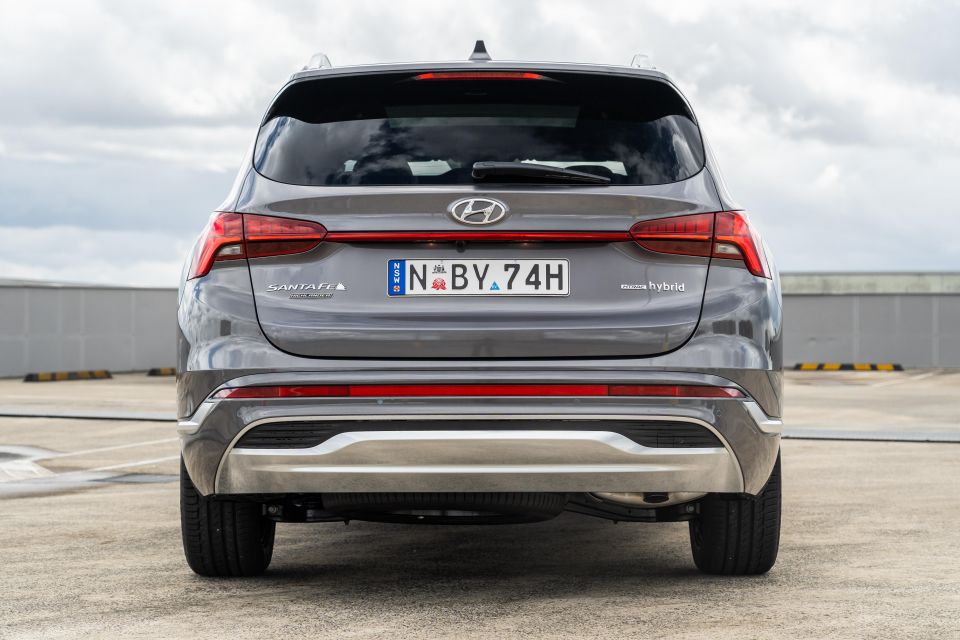
All Santa Fe models have a five-year and unlimited kilometre warranty, while the high-voltage battery is covered for eight years or 160,000km.
Hyundai has not yet published service prices, but says the intervals will be annual or 10,000km – which is lower than many rivals which now have 15,000km intervals.
Once pricing is published we will update this review, but expect them to be slightly higher than the diesel.
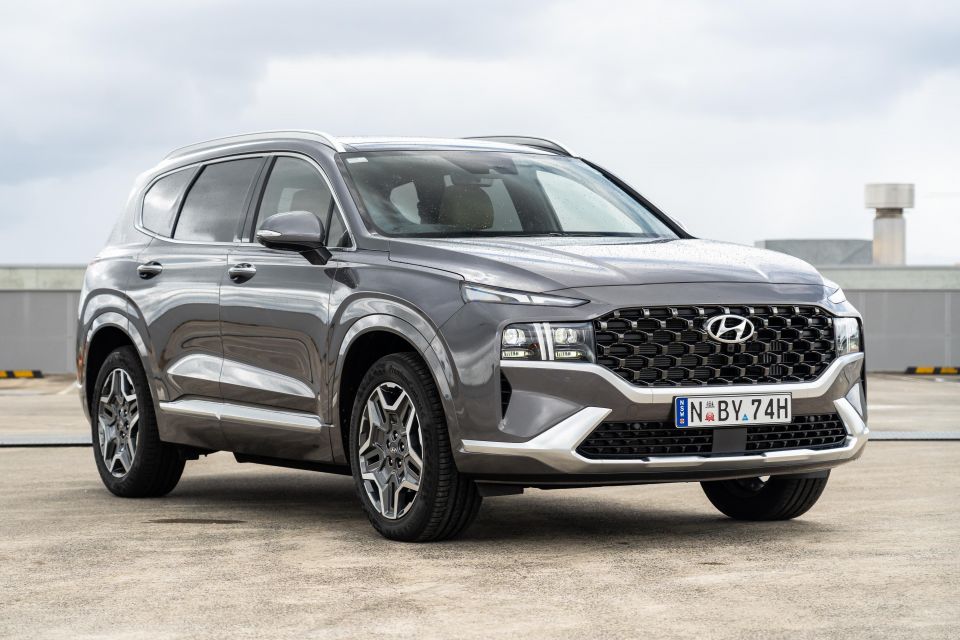
Overall the Santa Fe isn’t quite as fresh in design as the related Kia Sorento, but that car is in extremely tight supply. The Toyota Kluger meanwhile has more interior space and better daily efficiency, but falls down when it comes to multimedia and costs more in top-spec guise.
We could live without the price premium and would love to see the whole Santa Fe range electrified, and as with all Santa Fe variants there are packaging limitations in the third row. Moreover, the 10,000km servicing intervals are pretty average.
But overall this is a welcome addition to a long-standing favourite, particularly for those who have a heavy focus on stop/start urban commuting where the motor and battery are most useful, and who don’t need the diesel for towing or heavily-laden road trips.

Where expert car reviews meet expert car buying – CarExpert gives you trusted advice, personalised service and real savings on your next new car.


William Stopford
1 Day Ago


Matt Campbell
2 Days Ago


William Stopford
2 Days Ago


CarExpert.com.au
6 Days Ago


Max Davies
7 Days Ago


Damion Smy
7 Days Ago